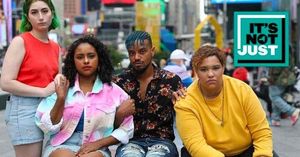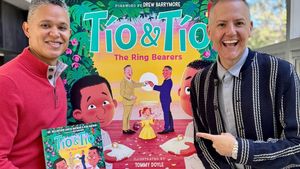Intersex young people struggle with their mental health at higher rates than their peers, and how they're treated by their families and doctors seems to play a part.
Over half of intersex LGBTQ+ youth (55 percent) reported seriously considering suicide in the past year, according to a new report from the Trevor Project, compared to 39 percent of endosex LGBTQ+ youth — those who do not have an intersex condition.
There are several factors that could be contributing to this disparity, says lead author Jonah DeChants, including a "combination of stigma and misplaced shame and embarrassment among individuals and researchers as well."
"Historically, intersex identities have been unfortunately very much stigmatized," DeChants tells The Advocate. "Some of that stigmatization came from poorly informed but well-intentioned families and medical providers who felt like in order for their child to have a 'normal life,' it was better for them to not know or to not talk about their intersex identity with other people, just like other LGBTQ identities."
This stigma has "really contributed to a lack of funding for research, a lack of thinking to ask people about their intersex status or having sex differences," according to DeChants, which is something his team wanted to begin rectifying. Their report surveyed 18,663 LGBTQ+ young people, some as young as 13, finding 256 who identified as both intersex and LGBTQ+ (1.4 percent). Though small in number, the disparities the group reported were vast.
Among intersex youth, 13 percent reported being subjected to some form of conversion therapy, in comparison to only 5 percent of their LGBTQ+ endosex peers. "That's a really big disparity," DeChants says, and it's especially concerning when 43 percent of intersex youth who were subjected to conversion therapy reported a suicide attempt in the past year, compared to only 22 percent who hadn't experienced conversion therapy.
"We can't establish a causal relationship in the survey. It's really a snapshot. We can't tell which came first, the chicken or the egg, but the fact that there are more chickens and more eggs is still an important relationship to document," he explains. "The fact that those rates are double really shows that there's a harmful association between experiencing these things specifically among intersex young people."
DeChants also noted the "similarities between coercive medical procedures and conversion therapy," as 17 percent of intersex youth reported experiencing a surgical procedure that altered their anatomy or their reproductive organs to "fit normative expectations based on the gender binary." Two-thirds of those respondents said that they had not consented to those surgeries, and the median age for such procedures was less than 1 year old.
"We really wanted to highlight the fact that most of those folks did not consent and were not able to consent to those procedures," DeChants said. "The nonconsensual administration of that health care very early in life is showing a detrimental impact on folks later in life."
It's important to keep "educating parents and doctors about the potential harm of these nonconsensual early in life procedures and trying to change the medical protocol and the medical culture around sex differences and intersex identities," DeChant says, pointing to the work of groups such as interACT that advocate for changes in law and policy.
For those in the lives of intersex youth, he emphasizes that "it would be better to leave that person's body alone until they have the ability to determine what their gender identity is or decide what medical interventions feel good for them."
"You do not have to have a body that fits into the gender binary in order to have a 'normal life' or to be a happy and healthy adult," DeChant says.
If you or someone you know needs mental health resources and support, please call, text, or chat with the 988 Suicide & Crisis Lifeline or visit988lifeline.org for 24/7 access to free and confidential services. Trans Lifeline, designed for transgender or gender-nonconforming people, can be reached at (877) 565-8860. The lifeline also provides resources to help with other crises, such as domestic violence situations. The Trevor Project Lifeline, for LGBTQ+ youth (ages 24 and younger), can be reached at (866) 488-7386. Users can also access chat services at TheTrevorProject.org/Help or text START to 678678.




















































































